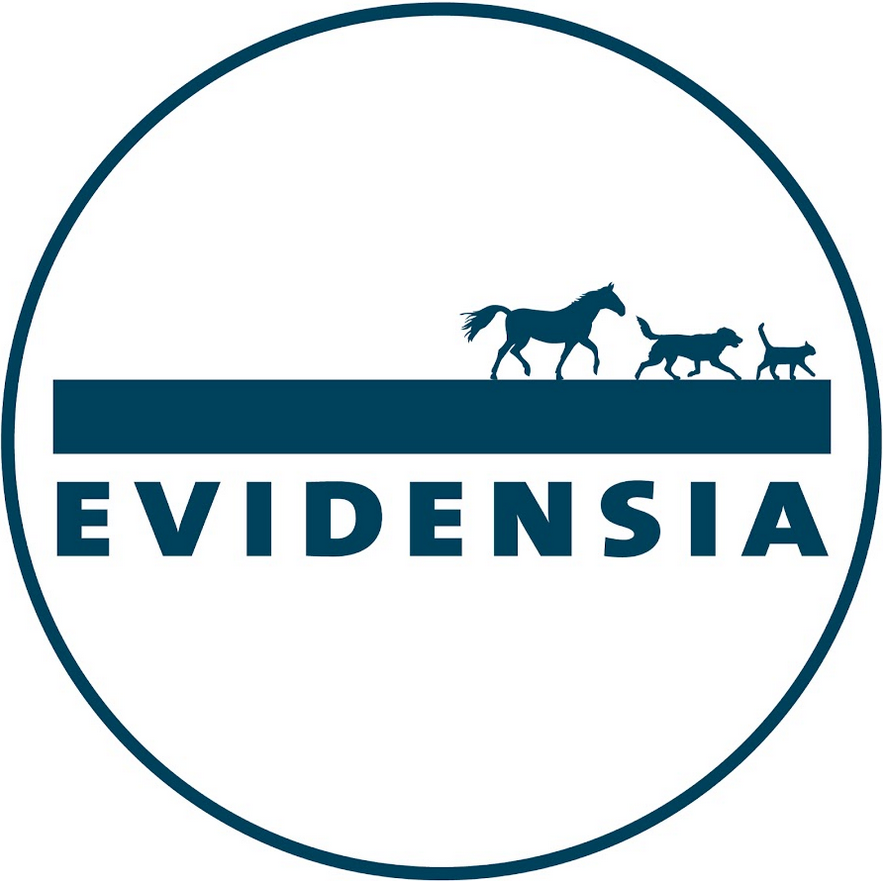Combination therapy
No results were found for your selected species
Cerenia
Active substance
ATC code
Species
Dogs.
Indications
• For the prevention of vomiting induced by motion sickness.
• For the prevention and treatment of vomiting, in conjunction with Cerenia solution for injection and in combination with other supportive measures.
Dose to be administered and administration route
For oral use.
For motion sickness, a light meal or snack before dosing is recommended; prolonged fasting before administration should be avoided. However, Cerenia tablets should not be administered wrapped or encapsulated in food as this may delay dissolution of the tablet and consequently the onset of efficacy.
Dogs should be carefully observed following administration to ensure that each tablet is swallowed.
For prevention of vomiting induced by motion sickness, (only for dogs 16 weeks of age or older)To prevent vomiting induced by motion sickness, Cerenia tablets should be administered once daily, at a dose of 8 mg maropitant per kg bodyweight, using the numbers of tablets given in the table below. Tablets are breakable along the score line on the tablet.
Tablets should be administered at least one hour before starting the journey. The anti-emetic effect persists for at least 12 hours, which for convenience may allow administration the night before early morning travel. Treatment may be repeated for a maximum of two consecutive days.
Prevention of motion sickness | |
Dog body weight (kg) | Number of tablets |
160 mg | |
7.6–10.0 | ½ |
15.1–20.0 | 1 |
20.1–30.0 | 1½ |
30.1–40.0 | 2 |
40.1–60.0 | 3 |
As the pharmacokinetic variation is large and maropitant accumulates in the body after once daily repeated administration, lower doses than recommended might be sufficient in some individuals and when repeating the dose.
Adverse reactions
Dogs:
|
Common (1 to 10 animals / 100 animals treated): |
Vomiting1 |
|
Very rare (<1 animal / 10,000 animals treated, including isolated reports): |
Neurological disorder (e.g. ataxia, convulsion, seizure, muscle tremor) Lethargy |
1 Observed pre-travel, usually within two hours of dosing.
Reporting adverse events is important. It allows continuous safety monitoring of a veterinary medicinal product. Reports should be sent, preferably via a veterinarian, to either the marketing authorisation holder or its local representative or the national competent authority via the national reporting system. See also section “Contact details” of the package leaflet.
Dispensing
POM-V - Prescription Only Medicine – VeterinarianSUMMARY OF PRODUCT CHARACTERISTICS
1. NAME OF THE VETERINARY MEDICINAL PRODUCT
Cerenia 160 mg tablets for dogs
2. QUALITATIVE AND QUANTITATIVE COMPOSITION
Active substance:
Each tablet contains 160 mg maropitant as maropitant citrate monohydrate.
Excipients:
Each tablet contains 0.075% w/w Sunset Yellow (E110) as a colorant.
For the full list of excipients, see section 6.1.
3. PHARMACEUTICAL FORM
Pale orange tablet.
The tablets have a score line allowing the tablet to be halved, with the letters “MPT” and figures denoting the quantity of maropitant on one side, the reverse side is blank.
4. CLINICAL PARTICULARS
4.1 Target species
Dogs.
4.2 Indications for use, specifying the target species
• For the prevention of vomiting induced by motion sickness.
• For the prevention and treatment of vomiting, in conjunction with Cerenia solution for injection and in combination with other supportive measures. 4.3 Contraindications
None.
4.4 Special warnings for each target species
Vomiting can be associated with serious, severely debilitating conditions including gastrointestinal obstructions; therefore, appropriate diagnostic evaluations should be employed.
Cerenia tablets have been shown to be effective in the treatment of emesis, however where the frequency of vomiting is high, orally administered Cerenia may not be absorbed before the next vomiting event occurs. It is therefore recommended to initiate the treatment of emesis with Cerenia solution for injection.
Good veterinary practice indicates that antiemetics should be used in conjunction with other veterinary and supportive measures, such as dietary control and fluid replacement therapy while addressing the underlying causes of the vomiting. The safety of maropitant during treatment beyond 5 days has not been explored in the target population (i.e. young dogs suffering from viral enteritis). In case treatment for a longer period than 5 days is regarded as necessary, careful monitoring of potential adverse events should be implemented. 4.5 Special precautions for use
Special precautions for use in animals
The safety of the veterinary medicinal product has not been established in dogs less than 16 weeks of age for the 8 mg/kg dose (motion sickness), and in dogs less than 8 weeks of age for the 2 mg/kg dose (vomiting) as well as in pregnant or lactating bitches. Use only according to the benefit-risk assessment by the responsible veterinarian.
Maropitant is metabolised in the liver and therefore should be used with caution in patients with hepatic disease. As maropitant is accumulated in the body during a 14day treatment period due to metabolic saturation, careful monitoring of liver function in addition to any adverse events should be implemented during long term treatment.
Cerenia should be used with caution in animals suffering from or with predisposition for cardiac diseases as maropitant has affinity to Ca- and K-ion channels. Increases of approximately 10% in the QT interval of the ECG were observed in a study on healthy beagle dogs administered 8 mg/kg orally; however, such an increase is unlikely to be of clinical significance.
Special precautions to be taken by the person administering the veterinary medicinal product to animals
People with known hypersensitivity to maropitant should administer the veterinary medicinal product with caution.
Wash hands after use. In case of accidental ingestion seek medical advice immediately and show the package leaflet or the label to the physician.
4.6 Adverse reactions (frequency and seriousness)
Incidents of pre-travel vomiting, usually within two hours post-dosing were commonly reported after administration of the 8 mg/kg dose.
Neurological disorders such as ataxia, convulsion/seizure or muscle tremor have been reported in very rare cases.
Lethargy has been reported in very rare cases.
The frequency of adverse reactions is defined using the following convention:
- very common (more than 1 in 10 animals treated displaying adverse reaction(s))
- common (more than 1 but less than 10 animals in 100 animals treated)
- uncommon (more than 1 but less than 10 animals in 1,000 animals treated)
- rare (more than 1 but less than 10 animals in 10,000 animals treated)
- very rare (less than 1 animal in 10,000 animals treated, including isolated reports).
4.7 Use during pregnancy, lactation or lay
Use only according to the benefit-risk assessment by the responsible veterinarian, because conclusive reproductive toxicity studies have not been conducted in any animal species.
4.8 Interaction with other medicinal products and other forms of interaction
Cerenia should not be used concomitantly with Ca-channel antagonists as maropitant has affinity to Ca-channels.
Maropitant is highly bound to plasma proteins and may compete with other highly bound drugs.
4.9 Amounts to be administered and administration route
For oral use.
For motion sickness, a light meal or snack before dosing is recommended; prolonged fasting before administration should be avoided. However, Cerenia tablets should not be administered wrapped or encapsulated in food as this may delay dissolution of the tablet and consequently the onset of efficacy.
Dogs should be carefully observed following administration to ensure that each tablet is swallowed.
For prevention of vomiting induced by motion sickness, (only for dogs 16 weeks of age or older)
To prevent vomiting induced by motion sickness, Cerenia tablets should be administered once daily, at a dose of 8 mg maropitant per kg bodyweight, using the numbers of tablets given in the table below. Tablets are breakable along the score line on the tablet.
Tablets should be administered at least one hour before starting the journey. The anti-emetic effect persists for at least 12 hours, which for convenience may allow administration the night before early morning travel. Treatment may be repeated for a maximum of two consecutive days.
|
Prevention of motion sickness |
|
|
Dog body weight (kg) |
Number of tablets |
|
160 mg |
|
|
7.6–10.0 |
½ |
|
15.1–20.0 |
1 |
|
20.1–30.0 |
1½ |
|
30.1–40.0 |
2 |
|
40.1–60.0 |
3 |
As the pharmacokinetic variation is large and maropitant accumulates in the body after once daily repeated administration, lower doses than recommended might be sufficient in some individuals and when repeating the dose.
4.10 Overdose (symptoms, emergency procedures, antidotes), if necessary
Cerenia tablets were well tolerated when administered for 15 days at dosages up to 10 mg/kg bodyweight per day.
Clinical signs including vomiting on first administration, excess salivation and watery faeces have been observed when the product has been administered at doses in excess of 20 mg/kg.
4.11 Withdrawal period(s) Not applicable.
5. PHARMACOLOGICAL PROPERTIES
Pharmacotherapeutic group: Antiemetics. ATCvet code: QA04AD90.
Maropitant is a potent and selective neurokinin (NK-1) receptor antagonist, which acts by inhibiting the binding of substance P, a neuropeptide of the tachykinin family, in the CNS.
5.1 Pharmacodynamic properties
Vomiting is a complex process coordinated centrally by the emetic centre. This centre consists of several brainstem nuclei (area postrema, nucleus tractus solitarius, dorsal motor nucleus of the vagus) that receive and integrate sensory stimuli from central and peripheral sources and chemical stimuli from the circulation and the cerebro-spinal fluid.
Maropitant is a neurokinin 1 (NK1) receptor antagonist, which acts by inhibiting the binding of substance P, a neuropeptide of the tachykinin family. Substance P is found in significant concentrations in the nuclei comprising the emetic centre and is considered the key neurotransmitter involved in vomiting. By inhibiting the binding of substance P within the emetic centre, maropitant is effective against neural and humoral (central and peripheral) causes of vomiting. A variety of in vitro assays have demonstrated that maropitant binds selectively at the NK1 receptor with dosedependent functional antagonism of substance P activity. In vivo studies in dogs demonstrated the anti-emetic efficacy of maropitant against central and peripheral emetics including apomorphine, cisplatin and syrup of ipecac.
Maropitant is non-sedative and should not be used as a sedative in motion sickness.
Maropitant is effective against vomiting. Signs of nausea including excessive salivation and lethargy might remain during treatment.
5.2 Pharmacokinetic particulars
The pharmacokinetic profile of maropitant when administered as a single oral dose of 2 mg/kg body weight to dogs was characterised by a maximum concentration (Cmax) in plasma of approximately 81 ng/ml; this was achieved within 1.9 hours post-dosing (Tmax). Peak concentrations were followed by a decline in systemic exposure with an apparent elimination half-life (t0.5) of 4.03 hours.
At a dose of 8 mg/kg, Cmax of 776 ng/ml was reached at 1.7 hours post-dosing. The elimination half-life at 8 mg/kg was 5.47 hours.
The inter-individual variation in kinetics may be large, up to 70 CV% for AUC.
During clinical studies maropitant plasma levels conferred efficacy from 1 hour after administration.
Estimates for the oral bioavailability of maropitant were 23.7% at 2 mg/kg and 37.0% at 8 mg/kg. The volume of distribution at steady-state (Vss) determined after intravenous administration at 1–2 mg/kg ranged from approximately 4.4 to 7.0 l/kg. Maropitant displays non-linear pharmacokinetics (AUC increases more than proportionally with increasing dose) when administered orally within the 1–16 mg/kg dose range.
Following repeated oral administration for five consecutive days at a daily dose of 2 mg/kg, accumulation was 151%. Following repeated oral administration for two consecutive days at a daily dose of 8 mg/kg, accumulation was 218%. Maropitant undergoes cytochrome P450 (CYP) metabolism in the liver. CYP2D15 and CYP3A12 were identified as the canine isoforms involved in the hepatic biotransformation of maropitant.
Renal clearance is a minor route of elimination, with less than 1% of an 8 mg/kg oral dose appearing in the urine as either maropitant or its major metabolite. Plasma protein binding of maropitant in dogs is more than 99%.
6. PHARMACEUTICAL PARTICULARS
6.1 List of excipients
Croscarmellose sodium
Lactose monohydrate
Magnesium stearate
Microcrystalline cellulose
Sunset Yellow (E110) as a colorant
6.2 Major incompatibilities
Not applicable.
6.3 Shelf life
Shelf life of the veterinary medicinal product as packaged for sale: 3 years. Shelf life of half tablets: 2 days.
6.4 Special precautions for storage
This veterinary medicinal product does not require any special storage conditions. An unused half tablet should be returned to the opened blister and kept within the outer cardboard.
6.5 Nature and composition of immediate packaging
Cardboard box containing one aluminium-aluminium blister pack, each containing four tablets per pack.
6.6 Special precautions for the disposal of unused veterinary medicinal product or waste materials derived from the use of such products
Any unused veterinary medicinal product or waste materials derived from such veterinary medicinal product should be disposed of in accordance with local requirements.
7. MARKETING AUTHORISATION HOLDER
Zoetis UK Limited
1st Floor, Birchwood Building
Springfield Drive
Leatherhead
Surrey
KT22 7LP
8. MARKETING AUTHORISATION NUMBER
Vm 42058/5010
9. DATE OF FIRST AUTHORISATION
28 September 2006
10. DATE OF REVISION OF THE TEXT
August 2022
Approved 26 August 2022

 TRUSTED SOURCE
TRUSTED SOURCE









